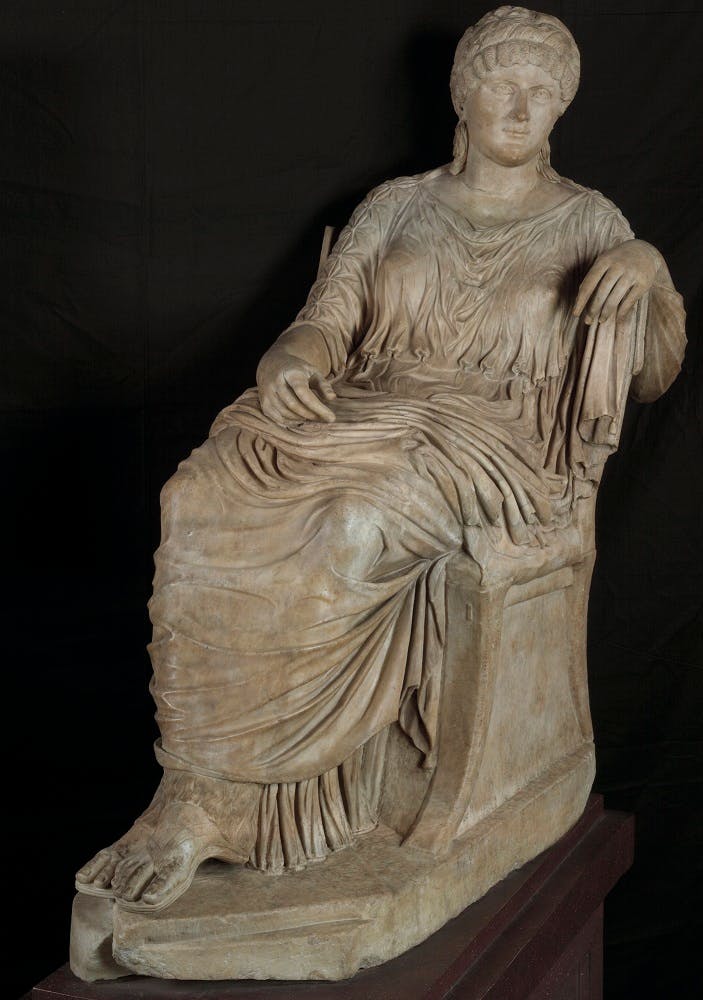Statue of Empress Helena
Roman art
This work, probably owned by Cardinal Ippolito d’Este, is perhaps one of the seated female sculptures found at Villa Adriana in the mid-16th century . It arrived in Florence at the end of the same century and after a period in the Boboli Gardens, it was placed in the Uffizi in 1640. Small additions can be seen on the nose, the figures and toes and some of the locks of hair, while the head, although repositioned on the neck, seems to be the original. The type of female figure, originally characterised by an artificial hairstyle in plaster, typical of late antiquity, has led to this figure being classified as the empress, Helena, mother of Constantine, celebrated by sources as having found a relic of the True Cross in Jerusalem. The statue seems to be adapted from an older work that can be identified as Lucilla, sister of emperor Commodus and datable to around 166 A.D. and then struck by damnatio memoriae. The Florentine marble, which has a direct parallel in a statue today in the Capitoline Museums in Rome, shows the prominent role of Helena during her son’s reign. Helena came from humble origins, becoming concubine to emperor Constantinius Chlorus, bearing his only male child. She was an early convert to Christianity and perhaps the inspiration behind and main supporter of the pro-Christian politics of her son in the years after the Battle of Milvian Bridge.
3D model in collaboration with Indiana University.
Visit: http://www.digitalsculpture.org/florence/
